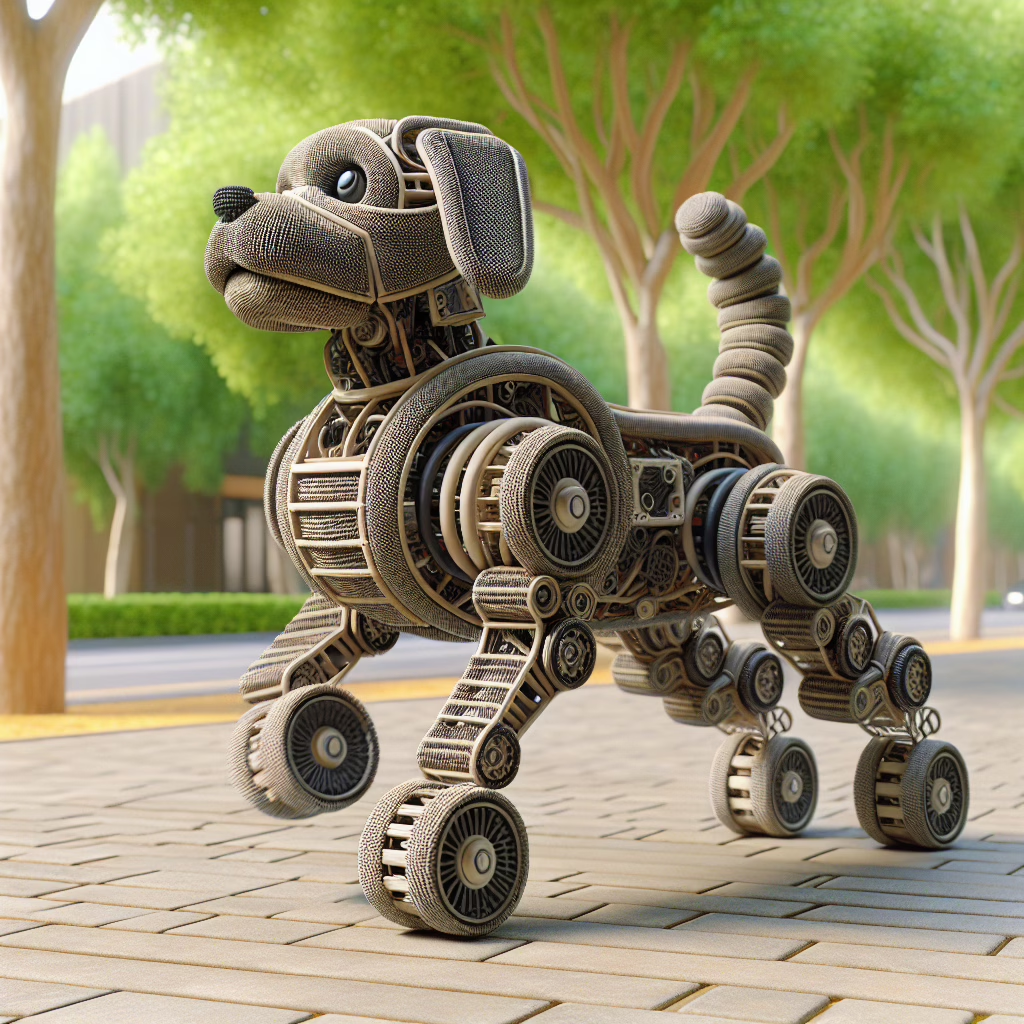Imagine a world where your dog doesn’t just drool on your shoes but performs mathematical acrobatics! Enter the rope-powered robot dog, a delightful creation by a brilliant US student that walks with stunning realism. Yes, you heard it right! This mechanical marvel combines engineering and art into a furry friend that never needs a bath. With innovations at the forefront of robotics, this fascinating project is capturing the imagination of both tech enthusiasts and pet lovers alike.
The Ingenious Design Behind the Robot Dog
This isn’t just any run-of-the-mill science project. The genius behind this robot dog lies in its design, which utilizes ropes instead of motors for movement. Imagine a marionette, but instead of strings tugging at its limbs, we have ropes elegantly crafted to move in a way that mimics the fluidity of a real dog’s walk. It’s like watching a ballet performance, but instead of prima ballerinas, we have a four-legged automaton powered by hard work and creativity!
The student employed advanced mathematical principles to calculate the precise angles and lengths necessary for each rope segment, ensuring that every step taken resembles that of an actual dog. Talk about putting your math skills to good use! Perhaps our teachers were right when they said we’d use geometry in everyday life—who knew it would lead to creating robot pets? This unique approach demonstrates a new avenue in robotics that merges art with engineering, allowing young innovators to explore both disciplines.
How the Magic Happens: The Mechanics of Movement
The ropes connect to various joints on the robot, allowing for coordinated movement that can be adjusted based on tension and angle. This results in a walking pattern so realistic that you might expect it to wag its tail and bark (though sadly, no barking yet). The innovation doesn’t stop there; this design offers flexibility and adaptability, which means the robot dog can navigate various terrains without breaking a sweat—or a leg!
- Reduced Weight: The use of ropes rather than motors means a lighter build.
- Simplified Control: The control system is less complex, enhancing reliability and ease of use.
- Realistic Movement: The design mimics the smooth motions of a real dog.
One of the most fascinating aspects is how this design eliminates many complexities associated with traditional robotic movements. By using ropes instead of motors, the student reduced weight and simplified the control system. So next time you’re struggling with your tangled headphones, just remember: if a robot dog can manage its ropes, surely you can conquer those pesky wires!
The Future of Robotics: A Playful Perspective
As we look ahead into the future of robotics in 2025 and beyond, this charming rope-powered robot dog serves as an excellent reminder that engineering doesn’t have to be all nuts and bolts. It can be whimsical and fun! This project could inspire future engineers to think outside the box—or should we say outside the kennel? Moreover, such innovations highlight the importance of creativity in technical fields. Who knows? The next big leap in robotics might come from someone who spent their childhood dreaming about having a pet that didn’t chew up their favorite shoes!
What Can We Learn from This Robotic Wonder?
This delightful invention brings us valuable lessons about problem-solving and thinking creatively. It shows that sometimes simple solutions—like using ropes—can lead to spectacular results. Plus, it’s a gentle nudge for all those students out there: don’t underestimate the power of your imagination (or geometry class) when tackling complex problems.
So whether you’re an aspiring engineer or just someone who enjoys watching cute robotic dogs strut their stuff, let this invention spark your interest in robotics and mathematics. After all, if you can dream it—and design it—then maybe one day you’ll be building your own robotic companion!
We’d love to hear your thoughts on this innovative project! What do you think about rope-powered robots? Could they be the future of pet ownership? Share your ideas in the comments below!
A big thank you to Rude Baguette for inspiring this exploration into the whimsical world of robotics!

